Switch to the mobile version of this page.
Vermont's Independent Voice
- News
- Arts+Culture
- Home+Design
- Food
- Cannabis
- Music
- On Screen
- Events
- Jobs
- Obituaries
- Classifieds
- Personals
Browse News
Departments
Browse Arts + Culture
View All
local resources
Browse Food + Drink
View All
Browse Cannabis
View All
-
Culture

'Cannasations' Podcaster Kris Brown Aims to 'Humanize'…
-
True 802

A Burlington Cannabis Shop Plans to Host…
-
Business

Judge Tosses Burlington Cannabiz Owner's Lawsuit
-
Health + Fitness

Vermont's Cannabis Nurse Hotline Answers Health Questions…
-
Business

Waterbury Couple Buy Rare Vermont Cannabis License
Browse Music
View All
Browse On Screen
Browse Events
Browse Classifieds
Browse Personals
-

If you're looking for "I Spys," dating or LTRs, this is your scene.
View Profiles
Special Reports
Pubs+More
Vermont Museum Leaders Reflect on the Past and Pandemic Present to Rethink the Future
Published March 3, 2021 at 10:00 a.m. | Updated March 16, 2021 at 3:28 p.m.
It's peaceful at the Rokeby Museum these days. The small, seasonal museum in Ferrisburgh has been closed all winter — as have most Vermont museums, seasonal or not. You can't go inside the education center, any of the former sheep farm's eight agricultural outbuildings, or the 18th-century farmhouse where, in the 1830s and '40s, Rowland Robinson sheltered escaped slaves as part of the Underground Railroad.
You can, however, walk the Rokeby's 90-acre grounds. Several miles of narrow trails meander through woods, past a pond and along a rolling, snowy pasture. One short spur leads to a small, currently frozen waterfall. Another offers a vista of the slumped spine of the Taconic Mountain range. Except for the faint buzz of traffic from Route 7, it's calm and quiet.
In normal times, a museum like the Rokeby exists to help us remember the past. But during a pandemic winter, it's a welcome place to seek refuge, if ever so briefly, from the present.
"We've definitely seen an uptick in trail usage," said Rokeby director Lindsay Houpt-Varner, who joined the museum in September.
While that increase in snowshoers and dog walkers is more of a feel-good benefit for the Rokeby than a practical one — the trails are free to use — it's a small consolation in a time of extreme turmoil and uncertainty.
"It's been a long year," Houpt-Varner said.
The pandemic has had a profound impact on cultural institutions such as the Rokeby. The statewide shutdown kept the museum from opening as usual in May. Though it partially reopened in July and remained open with state-mandated capacity limits through mid-October, admissions were down "at least 50 percent," Houpt-Varner said.
Believe it or not, the Rokeby has fared better than most.
A July 2020 survey by the American Alliance of Museums warned that the U.S. could permanently lose as many as one-third of its museums, zoos, aquariums and science centers due to the devastating loss of revenue from the pandemic. Over the past year, 98 percent of such institutions closed at least temporarily.
According to a follow-up survey in October, institutions that had reopened were operating, on average, at about 35 percent of their usual capacities — a number the alliance deemed "unsustainable."
Among Vermont museums reporting to the New England Museum Association, attendance was down 74 percent, from 402,000 in 2019 to just shy of 104,000 in 2020. The association doesn't track revenue, but you don't need to be a mathematician to deduce that those numbers were pretty dire, too.
The pandemic raised looming questions for museums and other cultural institutions. For starters, how can they survive with little to no admissions revenue and continued uncertainty around membership, charitable donations and grants? The answer: just barely.
"I don't know of an institution in Vermont that would not self-identify as being in some sort of precarious state when it comes to their economics," Shelburne Museum director Thomas Denenberg said. "And that was true before all this started."
Sudden and rapid financial decline isn't the only paradigm shift museums have faced in the past 12 months. As Denenberg put it, "The past year wasn't just a biological crisis, it was a cultural crisis."
Last summer, the country's streets filled with protesters following multiple police killings of Black Americans; the fall brought a historically fraught presidential election. In January, angry Donald Trump supporters stormed the U.S. Capitol, a shocking insurrection that resulted in five deaths, dozens of injuries and a collective national trauma.
In short, the country's long-simmering tensions surrounding equality, justice, accessibility and truth itself have boiled over. Given their traditional role of preserving the legacy of a people and presenting it to future generations, museums are natural places to have hard conversations about these issues, raising fundamental questions of mission, representation and inclusion. Those conversations are happening, even as the pandemic makes it all the more imperative to find new ways of connecting museums with their public.
"Our staff had been asking the question before the pandemic, and then it was accelerated during the pandemic: 'Why do we exist?'" said Susan Evans McClure, executive director of the Lake Champlain Maritime Museum. "'What is the point of this museum?'"
Even as many institutions remain physically closed, the world of Vermont museums is transforming.
The Museum of Everyday Strife
One day, when the pandemic is finally behind us, a national coronavirus museum may be erected somewhere in the United States. It may house artworks created in quarantine and science-heavy installations on the efficacy of social distancing, handwashing and masks. Interactive maps could illustrate how the virus ravaged the globe and how various locales contained it, or didn't. A solemn memorial could recognize the hundreds of thousands of American lives lost to COVID-19 and pay tribute to the frontline workers who risked theirs.
An exhibit on existential angst could occupy an entire wing of this fictional coronavirus museum. "What is the point?" is a question that the leaders of Vermont's 140-some actual museums — from Hildene, the Lincoln family home in Manchester, to the Arnold Zlotoff Tool Museum in South Hero — may have to confront soon, if they haven't already.
For now, as Denenberg put it, "We're all basically in survival mode."
In early March 2020, he recalled, Shelburne Museum had just adopted its annual budget. "Then two weeks later, I tore it up," he said.
On March 25, Gov. Phil Scott issued his "Stay Home, Stay Safe" executive order, shuttering museums along with almost all businesses deemed inessential. That measure forced every sector of the economy that relies on convening people — arts and entertainment, sports, education — to face stark realities.
Denenberg's goal was to trim $2 million from the museum's $7.5 million annual budget. Step one was to decline to hire seasonal staff, who account for a significant majority of the museum's employees.
"And then we canceled everything that could be canceled," Denenberg said. That included summer camps, in-person educational programs, and special events such as weddings and the Ben & Jerry's Concerts on the Green series produced by Higher Ground.
"It was pretty clear from the beginning that there was gonna be no earned income [last] year," the director said. In a typical year for the museum, earned income — revenue from admissions, gift shop sales and events — is about $1.2 million.
Nonprofits "are phenomenally undercapitalized entities and are not resilient in the ways that other institutions are," according to Denenberg. "So when it comes to great economic stresses, it's gonna be a game changer for many of us."
Federal Paycheck Protection Program loans enabled the museum to get through most of the year "relatively intact," he said. Denenberg took a pay cut, and eight staffers in or related to visitor services have been furloughed until the museum reopens in May, but no full-time staff members were laid off. Denenberg acknowledged that the museum's $27.5 million endowment also provided a cushion that not many other Vermont institutions have.
"Endowment is a perfect solution to a problem like this," he said.
The museum reopened in late summer, but with strict limitations. Visitors were allowed to walk the 45-acre campus and visit a handful of its 39 exhibition buildings. Only 150 people were allowed on the grounds at one time, compared with a normal capacity of 850. The museum closed again in the fall when Vermont's COVID-19 numbers spiked.
The Fairbanks Museum & Planetarium in St. Johnsbury opened on July 1 "to not very many people," executive director Adam Kane said. He noted that his museum's earned revenue has been "massively eroded." But it's not just the financial drain that's getting him down.
"We don't run these museums for nobody to come through," he said. "What makes us happy is people enjoying the space and learning things. So it's disheartening, truthfully. But," Kane added, "you wouldn't want to have 200 people in the Fairbanks Museum right now anyway, for health reasons."
Kane is more likely to want those people in the museum when its new $2.5 million, three-story natural sciences wing is finished, probably within the year. But even with vaccines creating optimism, it's unclear when conditions might improve enough for a full reopening.
"We've gotten through this year OK — or as OK as one can be," Denenberg said of Shelburne Museum, which recently announced it will not host in-person summer camps in 2021. The museum ended its fiscal year with a balanced budget, he noted, which was as much of a shock to him as anyone else.
"That was a buoying realization," Denenberg said. It means his improvised measures worked and that a 2021 operating plan based on last year's model of limiting expenses and capacities could, too — though it's not a long-term solution.
"I think what everyone is trying to figure out right now is, 'What does this next year mean?'" Denenberg said. "'And what happens thereafter?'"
The Museum of Together Apart
click to enlarge 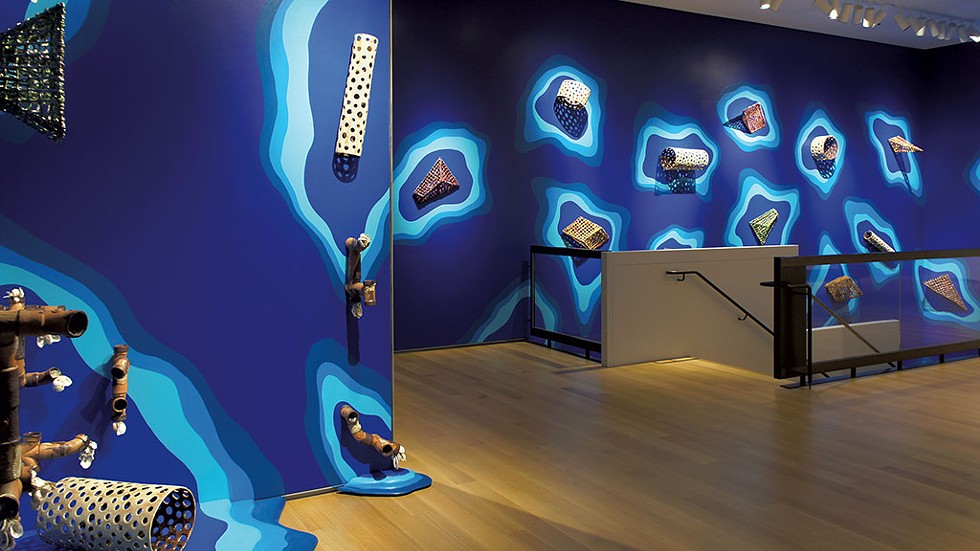

- Courtesy Of Alison Palizzolo
- Courtney Leonard installation at the Hood Museum of Art
To continue serving their communities, keep staff engaged and generate trickles of income, many Vermont museums have turned to digital stopgap solutions — online exhibits, Zoom lectures, virtual classes and the like. Some of that innovation will survive the pandemic.
"A lot of the emotional experiences are available [virtually]," said John Stomberg, director of the Hood Museum of Art at Dartmouth College in Hanover, N.H. Only members of the campus community are currently allowed in the museum — just 10 of them at a time, twice a day. But many exhibits are available to view online, including "Form & Relation: Contemporary Native Ceramics."
That show features the work of six Indigenous artists from all over the United States. One piece, "Every One (#MMIWQT Bead Project)," by Cannupa Hanska Luger, is visible in the vitrine window of the Hood's north façade, should you happen to be in Hanover. Regardless, you can see the whole exhibition through 3D software adapted from the real estate industry — and in a virtual reality version, if you have a VR headset.
That's a cool experience, and it opens up the museum's collections to an audience beyond the Upper Valley. But virtual reality can't replace the in-person experience of viewing art.
"Some of these old pieces still smell," Stomberg said. "So there's a sensory element that's missing."
What virtual offerings can do is keep people connected. In an age of isolation, that's invaluable.
At Shelburne Museum, Denenberg said, "We're trying to keep people distracted and engaged" — though he conceded that it's hard to predict which online programming will appeal to the public. Of the museum's 35 or so online offerings in the past year, a six-week virtual quilt club was its most successful.
"Who knew so many people were into quilting?" Denenberg marveled.
Connectedness has been a boon to more than the quilting crowd, though. Museums themselves are joining forces in new ways and using that combined strength to make their resources more accessible to the public.
"I think the unique thing that's happened because of the pandemic is a number of collaborations that wouldn't normally have happened in the Before Time, because everyone was busy doing their own thing," said Marcos Stafne, executive director of the Montshire Museum of Science in Norwich. "But in this time period, people have really reached into their networks for support and peer guidance."
Prominent among those new unions is FourScience Vermont. Launched in May, the program links a quartet of science museums: the Montshire, the Fairbanks, the Vermont Institute of Natural Science in Quechee and ECHO Leahy Center for Lake Champlain in Burlington.
Together, those organizations are better able to share resources and provide services to their communities. In particular, the science centers collaborate on virtual programming for STEM (science, technology, engineering and math) education, an interactive rubric offered to schools and homeschoolers to bolster science education.
"Even in the best of times, teachers need our support for science education in the state," Stafne said. "And in the worst of times, science is definitely something that can get left behind. So we have felt it very much a part of our responsibility that STEM engagement is happening.
"We each do it in different ways," he continued. "But we're now in constant contact with each other to see what opportunities there are for us to work together on collaborative digital experiences or fundraising, or even just [to understand] the various support skills we bring each other."
Stafne noted that this partnership isn't just for museum heads.
"Our finance managers all talk to each other; our directors of development talk to each other; our directors of education, facilities services directors," he said. "And I really believe that will continue past the pandemic. We're a little more fluid now."
ECHO's executive director, Phelan Fretz, agrees. "We could not have reopened when we reopened without working together," he said.
The lakeside science center, packed with kid-friendly exhibits, reopened in June and charged no admission through the summer. It's currently open five days per week with limited hours and capacity.
"At our core, the question was: How do we support families?" Fretz said. "We're a place that's about multigenerational learning."
ECHO's primary missions are stewardship of Lake Champlain and STEM education. Fulfilling the latter goal meant finding new and creative ways of reaching kids and their families.
"The pandemic really exposed folks who are lower resource," Fretz said. "It just exacerbated [the hardships of] their very existence. So, for us, it's also been about: What are we doing as an organization to address equity issues? Whether that's gender, whether that's poverty, whether that's differently abled in learning styles, it's really about building community and changing our capacity to serve the under-resourced."
The most visible of those efforts has been ECHO's Virtual STEM Academy, a series of livestreamed science lessons and activities aimed at elementary schoolers. The science center produces the six-week sessions in its recently built video studio and delivers them to more than 60 Vermont schools.
Beaming those lessons to thousands of students statewide makes them more accessible, but not universally. For one thing, high-speed internet isn't available in some parts of Vermont. For another, ECHO's STEM lessons include interactive components that require common household items to perform. Not every family has those materials on hand or the means to get them.
Fretz recalled that such a situation arose in Hardwick last year. Rather than exclude any students, ECHO staffers delivered activity kits to the school, which distributed them as part of its meal program.
"We all know there is a digital divide in Vermont, and so the question was: How do we start to breach some of that?" Fretz said. "Literally, my staff got together, made up 900 of these kits, put them in a big box and delivered them to the school."
He added, "If you're approaching these issues with equity in mind, an aware educator will start to see the opportunities."
The Museum of Truth and Reconciliation
click to enlarge 

- Courtesy
- Detail of a painting by Thomas Hovenden that was removed from the Fleming Museum of Art
If you were to stroll through the European/American Gallery of the Fleming Museum of Art right now ... well, you'd probably be a University of Vermont student or faculty member. Like the Hood at Dartmouth, the Fleming is currently open only to the campus community. (Also like the Hood, the Fleming has a comparatively stable financial status under the higher-ed umbrella.)
But if you did have access to that gallery, you might notice a few blank spaces on the walls. Among these is the spot occupied until recently by a work of 19th-century American painter Thomas Hovenden. It depicts an elderly Black man sitting by a steaming pot on a cast-iron stove. The painting's title uses dialect, a form of racial stereotyping common among artists and writers at the time: "Dat Possum Smell Pow'ful Good."
That's not the only troublesome item in the Fleming's collection. Some works, like Hovenden's painting, are overtly racist. Others are more subtly problematic because of the violent or exploitative manner in which they were acquired. For both of those reasons, the Fleming's African and Ancient Egyptian Gallery, which opened 30 years ago and contains outdated and inaccurate information, is currently closed while director Janie Cohen and her staff determine how to reinstall the collections.
"One of the silver linings of the pandemic was this gift of time in which we were able to slow down and focus on what quickly became our chief goal," Cohen said, "which was reconsidering everything that we do in the context of systemic racial inequity within the context of museums, in which [that inequity] is embedded."
The museum is in the process of creating a "values document," which will reframe and refocus its mission and set out its approach to reckoning both with racist pieces and its own fraught history.
"This is where we see our most important work right now," Cohen said, "in part because the history of museums like ours is that we have centered whiteness as the main framework for everything, be that collecting, exhibitions or education."
The Fleming is hardly alone. Even before the pandemic and the racial justice protests of last summer, museum leaders in Vermont and around the country had begun to contend with the uncomfortable histories of their institutions and items in their collections. But the events of the past year gave those discussions renewed urgency.
For instance, in June, the Alabama Department of Archives and History for the first time publicly acknowledged its role in promoting and perpetuating a whitewashed version of history. Its collections have all but ignored Black people and have framed the Confederacy's role in the Civil War as a just fight rather than one to preserve slavery.
"If history is to serve the present, it must offer an honest assessment of the past," department director Steve Murray and trustees wrote in a "statement of recommitment."
Such statements are all well and good. But they're essentially meaningless if real action doesn't follow. Where to start?
"You have to change the concept of a museum as an elitist place," Evans McClure of the Lake Champlain Maritime Museum said. "And you can't do that until you accept that the history of museums is fundamentally elitist.
"Museums were created as these cabinets of curiosity where rich white men went out and took things from other people, mainly people of color," she continued, "and put them on display for other rich white people."
Consequently, one key to transforming museums is centering the perspectives of people other than rich white men.
"When you understand that the past was made up of individuals who made individual decisions, it's really empowering, because you can see that your own choices can also be part of history. Because that's all history is: people making choices," Evans McClure said. "But you have to see yourself in that past to make that connection."
Houpt-Varner of the Rokeby believes that "Our history can be a part of the truth and reconciliation process within this wider conversation taking place around racism and social justice," she said. "In order for us to really have conversations truthfully about inequities in our communities, we have to understand our communities' histories and how history impacts what's happening today."
As an example, Houpt-Varner cited an exhibit at the Rokeby last summer, "Mending Fences: New Works by Carol MacDonald." For her installation, the Colchester artist creatively repaired damaged and deaccessioned items in the Rokeby collection — clothing, ceramics, cookware and linens.
"It was a such a timely exhibit," Houpt-Varner said, "looking at this idea of both mending physical items but ... also using it metaphorically to talk about mending divides within society and talking about racism."
This drive toward a more inclusive understanding of the past is one reason a 2020 Maritime Museum digital exhibit celebrating the 100th anniversary of women's suffrage, "Women at the Helm," focused on women leaders and ship captains on Lake Champlain. And it's why the Fleming is actively working to include more work by BIPOC (Black, Indigenous and people of color) artists and to publicly address its history. For the museum's fall show, "Reckonings," museum staff and student interns engaged with various pieces in the collection, including problematic ones, and related them to the events of 2020.
"The goal is change," Cohen said. Still, she noted that transformation at the Fleming and other Vermont museums won't happen overnight. The Fleming will celebrate its 90th anniversary this year. As Cohen put it, "It's a terrible, terrible thing that we have had 90 years of not addressing these issues."
But it's a beginning, and if change follows, it will represent one of the few silver linings of this tumultuous time.
"A lot of the circumstances that we're all reckoning with, I think, are just moments of clarity on problems that were already underlying before the pandemic happened," Denenberg said. "We're reinventing museums as we move forward in this country."
Disclosure: Lake Champlain Maritime Museum director Susan Evans McClure is a friend of the author.
The original print version of this article was headlined "Framing the Questions | Facing an uncertain future, Vermont museum leaders draw inspiration from both past and pandemic present"
Got something to say?
Send a letter to the editor
and we'll publish your feedback in print!
About The Author
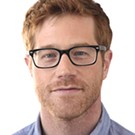
Dan Bolles
Bio:
Dan Bolles is Seven Days' assistant arts editor and also edits What's Good, the annual city guide to Burlington. He has received numerous state, regional and national awards for his coverage of the arts, music, sports and culture. He loves dogs, dark beer and the Boston Red Sox.
Dan Bolles is Seven Days' assistant arts editor and also edits What's Good, the annual city guide to Burlington. He has received numerous state, regional and national awards for his coverage of the arts, music, sports and culture. He loves dogs, dark beer and the Boston Red Sox.
More By This Author
Latest in Culture
Related Locations
-
ECHO Leahy Center for Lake Champlain
- 1 College St., Burlington Burlington VT 05401
- 44.47642;-73.22100
-
 802-864-1848
802-864-1848
- www.echovermont.org
-
Fairbanks Museum & Planetarium
- 1302 Main St., St. Johnsbury Northeast Kingdom VT 05819
- 44.42005;-72.01985
-
 802-748-2372
802-748-2372
- www.fairbanksmuseum.org…
-
Hood Museum, Dartmouth College
- Wheelock St., Hanover Outside Vermont NH 03755
- 43.70681;-72.27353
-
 603-646-2808
603-646-2808
- hoodmuseum.dartmouth.edu/
-
Be the first to review this location!
-
Lake Champlain Maritime Museum
- 4472 Basin Harbor Rd., Vergennes Middlebury Area VT 05491
- 44.19732;-73.35668
-
 802-475-2022
802-475-2022
- www.lcmm.org
-
Montshire Museum of Science
- 1 Montshire Rd., Norwich Upper Valley VT 05055
- 43.70025;-72.30517
-
 802-649-2200
802-649-2200
- www.montshire.org…
-
Rokeby Museum
- 4334 Route 7, Ferrisburgh Middlebury Area VT 05456
- 44.22259;-73.23743
- www.rokeby.org
-
Shelburne Museum
- 6000 Shelburne Rd., Shelburne Chittenden County VT 05482
- 44.37087;-73.23170
-
 802-985-3346
802-985-3346
- www.shelburnemuseum.org
Related Stories
Speaking of...
-

The VSO's Jukebox Quartet Explores the 'Sound of Science'
Apr 10, 2024 -

Totality Towns: What to Do and See in the Path of the Eclipse
Apr 2, 2024 -

Eye on This Guy: As the Solar Eclipse Approaches, Vermont Astronomer and Meteorologist Mark Breen Is Having His Moment in the Sun
Mar 13, 2024 -

The Exhibition 'Gilded' Wants Us to Consider That Which Does Not Glitter
Mar 6, 2024 -

With a New Annex and an Impending Eclipse, the Fairbanks Museum & Planetarium Highlights Hands-On Discovery
Feb 14, 2024 - More »





























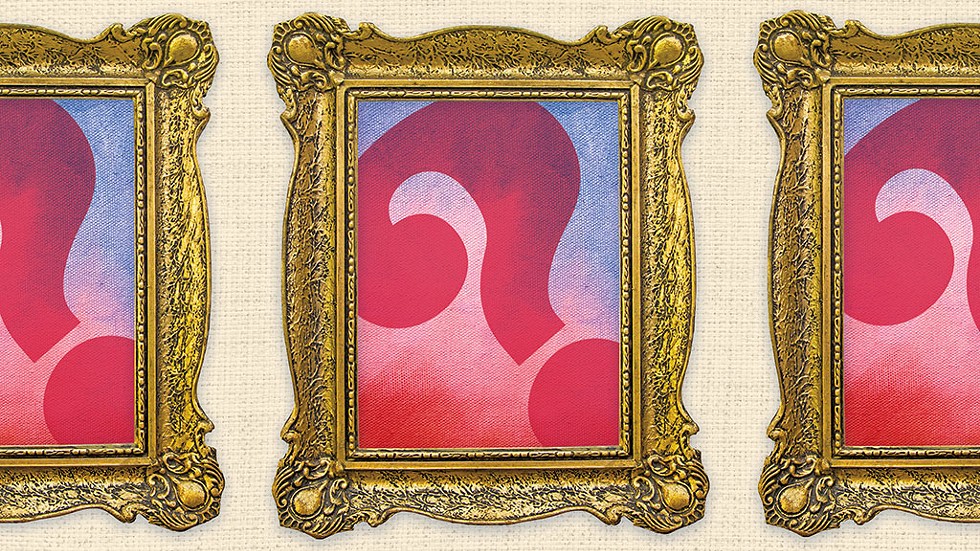
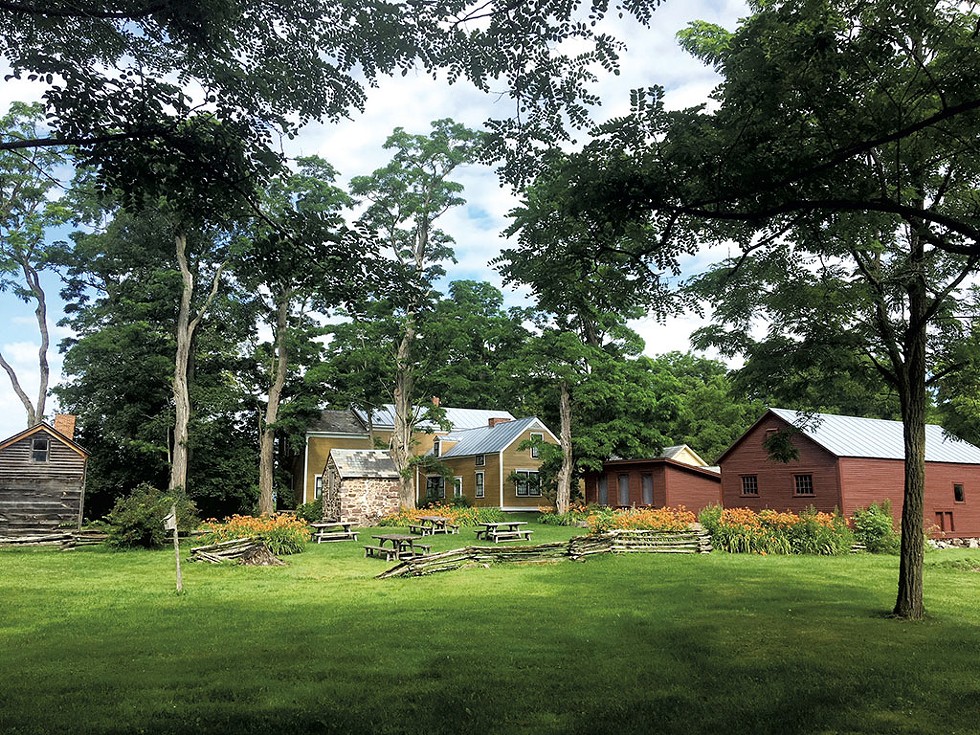
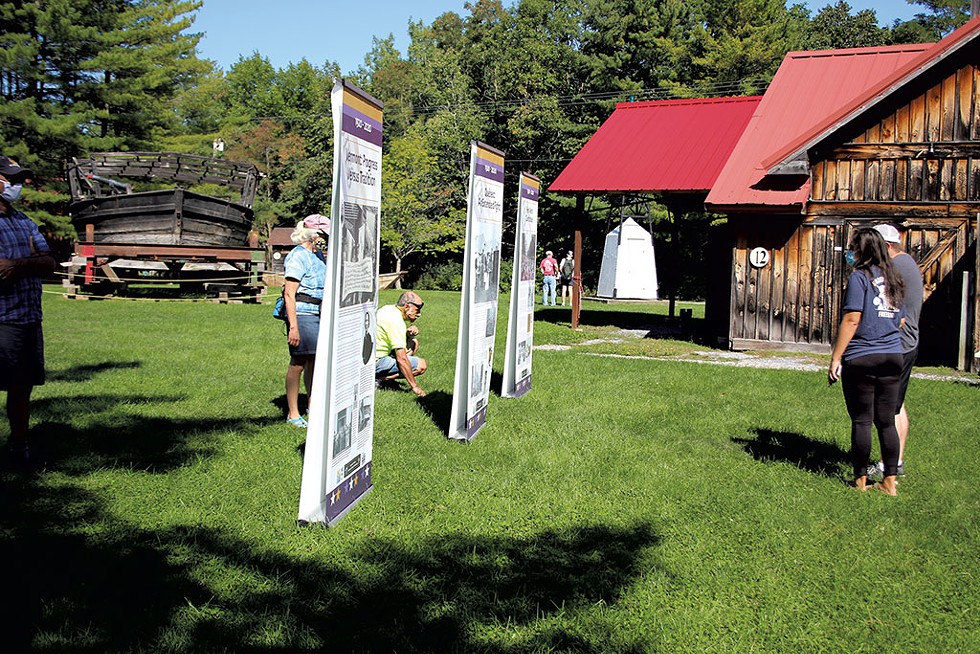

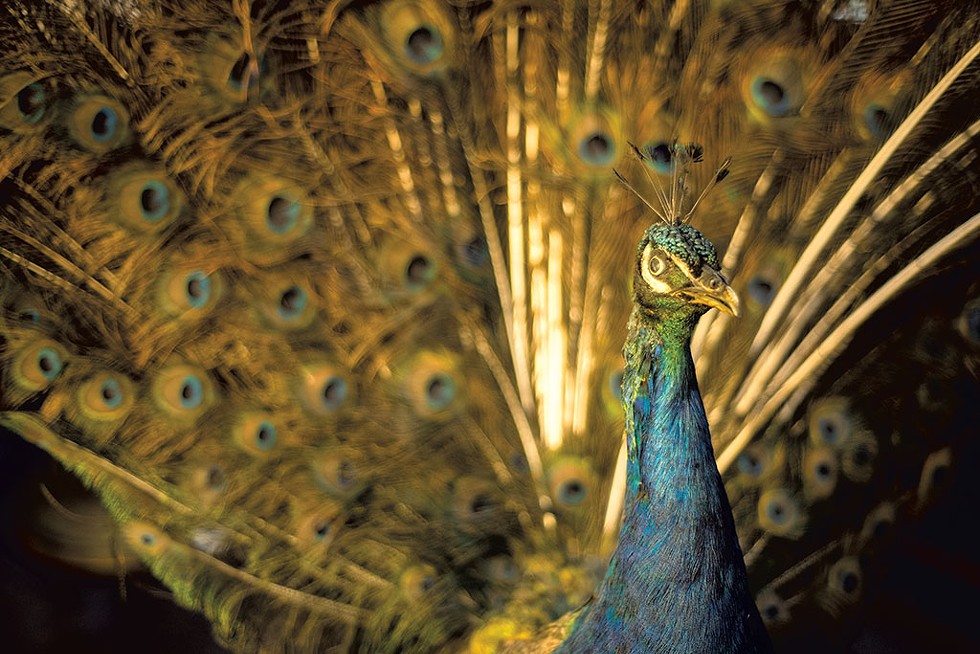
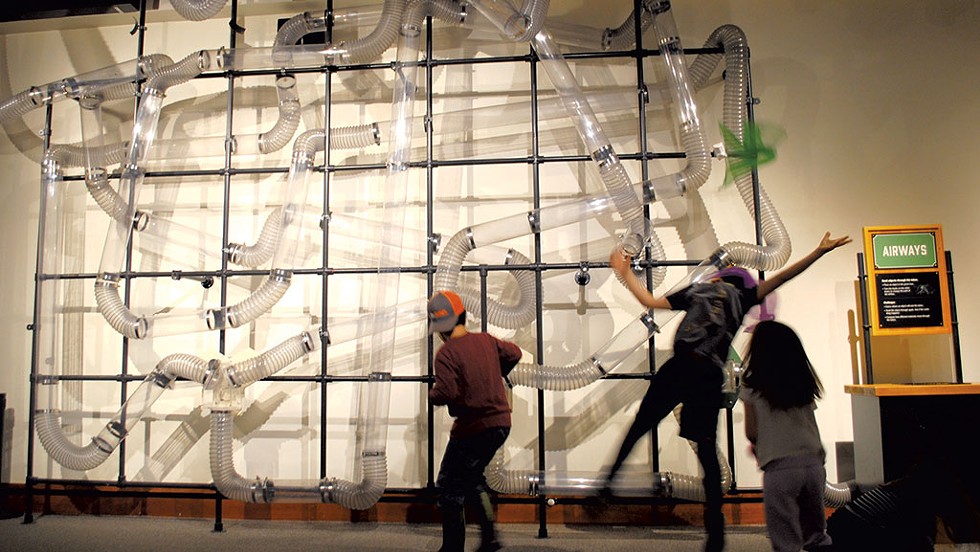





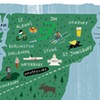
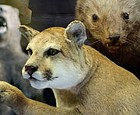
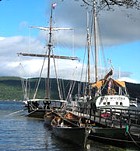

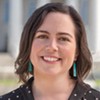
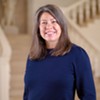

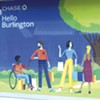


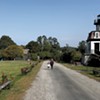
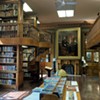
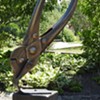


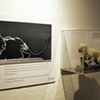
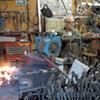





find, follow, fan us: